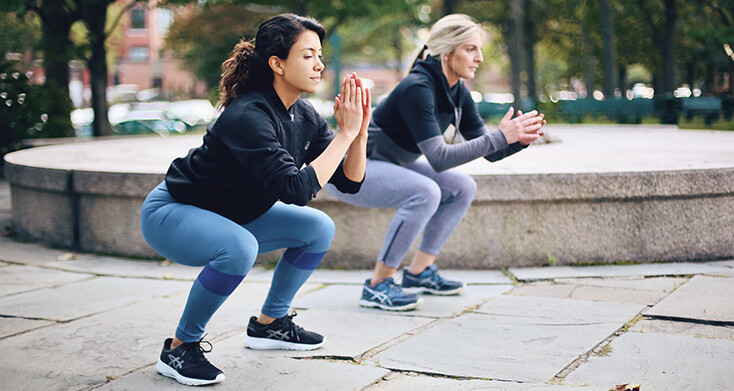Running News Daily
Running News Daily is edited by Bob Anderson. Send your news items to bob@mybestruns.com Advertising opportunities available. Train the Kenyan Way at KATA Kenya and Portugal owned and operated by Bob Anderson. Be sure to catch our movie A Long Run the movie KATA Running Camps and KATA Potato Farms - 31 now open in Kenya! https://kata.ke/
Index to Daily Posts · Sign Up For Updates · Run The World Feed
Best squats for runners to maximize lower body strength
Want to level up your endurance and structural tolerance? Simple squats can help. Recent studies have shown that adding strength exercises to a running program can improve running economy and boost anaerobic and neuromuscular properties, and being a structurally stronger runner will help you avoid injuries while boosting endurance, helping you feel good all the way to the finish line.
Squats are a fun and simple exercise, and easy to incorporate into your daily routine—you don’t need a gym or fancy equipment, and can “stop and squat” while you’re making dinner or watching TV. Amplify your squat routine with any of these variations, which are perfectly suited for runners.

Body weight squat
Get started with a basic bodyweight squat, a foundational strength move. Your quads, glutes and hamstrings will do the major work here, while your core stabilizes you throughout.

Stand with your feet hip-width apart. Brace your core, and keeping your chest out, push your hips back and down, as if you are trying to sit in a chair. Make sure your knees don’t cave in; keep them over your baby toes, or as close as possible.
Lower your body until your thighs are parallel to the floor. Angle the upper body forward and reach your arms out in front of you to aid balance. Engage your core and squeeze your glutes to return to a standing position. Pracitse inhaling as you lower and exhaling as you stand up. You should be able to complete three sets of 15 reps with ease before adding weight for resistance.
Single-leg squat
Unilateral exercises improve your balance and strength, and are also useful if you find one leg is much stronger than the other. If you’re new to these, it’s helpful to use a sturdy table or wall for balance.
Stand next to a stable surface and lift your outside foot off the ground, bending your knee at a 90-degree angle. Hike your outside hip.
Begin to squat on your inside leg. Try to reach parallel, using the stable surface for support if needed. Make sure your knee doesn’t cave in.
Once you’ve dropped as far as you can go, push back up through your entire foot and return to start. Don’t worry if you’re only able to lower yourself a small amount—as you gain strength and flexibility, you’ll notice that you can squat more deeply.
Repeat 10 times, then switch legs.
Sumo squat
Sumo squats involve a wide stance with toes pointed outward, and target the inner thighs, glutes and hamstrings. They also improve hip mobility, and engage the core.
Begin with feet wider than shoulder-width apart, toes pointing outward.
Squat down while keeping the chest up and knees tracking over the toes. (Be careful not to let your knees cave in.)
Return to the starting position, squeezing the glutes at the top of the movement.
Aim for three sets of five to 10 squats to start, and increase the number of squats as you gain strength. Once you feel comfortable, you can increase the resistance by holding a weight, kettlebell or a medicine ball at chest level.
Jump squat
These are a high-intensity variation that involves performing a standard squat and then exploding upward into a jump. They primarily target the quadriceps, hamstrings, glutes and calves, and improve explosive power, agility and cardiovascular fitness.
Stand with feet shoulder-width apart and knees slightly bent.
Bend your knees and sink into a full squat position, being careful not to let your knees collapse inward.
Engage through the quads, glutes, and hamstrings and propel the body up and off the floor, extending through the legs. With the legs fully extended, the feet will be a few inches (or more) off the floor.
Descend and control your landing by going through your foot (toes, ball, arches, heel) and sink into the squat position again, keeping your knees over your outer toes.
After landing, immediately head into the next squat. Try five to 10 jump squats to start.
Jump squats can be challenging if you’re new to them, and it may be easier to try them on a grassy field or on another surface that has some “give” to it (like a running track). Make sure you’re jumping smoothly and with control.
Squats are an intense workout and may add to lower body soreness and fatigue. Try planning a squat workout on a harder running or speedwork day—it sounds extra challenging, but it means that your body will have a chance to fully recover when you take a rest day or easy running day.
by Keeley Milne
Login to leave a comment




